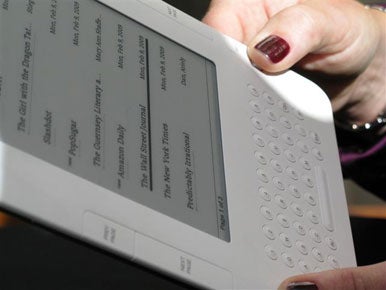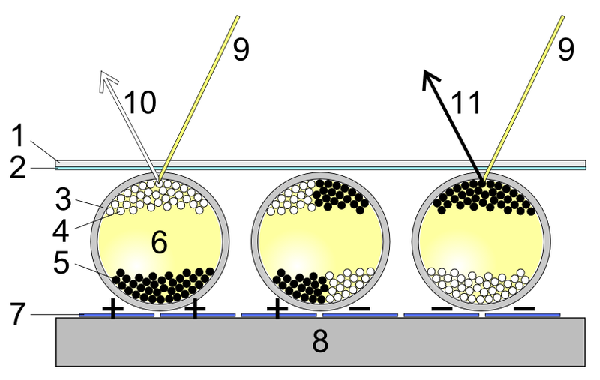
The Kindle took the market by storm and in June of 2010 the electronic editions were outselling hardcover books, by January of 2011 they were outselling paper back. This trend shows that e-readers are the way the industry is moving and while books aren't going away yet, as prices of e-readers drop, more and more people are finding the convenience of e-readers as a major selling point. But the real question is how do these devices work? They have battery life measured not in hours, like many smart phones, but rather in weeks and are fully visible in daylight, making them seem like magic compared to their LCD brethren.
The first thing to notice is that e-ink works nothing like a normal screen on a monitor or phone. An LCD screen is made of millions of dots that all glow Red, Green, and Blue. Each pixel, dot, is made up of these 3 colors and using various mixtures of these colors you can form the wide range of colors that your screen displays. The problem is that these displays generate light; this light fatigues your eyes over time and is hard to see when in direct sun light. Because of this LCD screens use a lot of power and can't be easily used when outdoors.

E-ink technology differs greatly from this, as instead of dots of light, it uses a mixture of positively (white sand) and negatively (black sand) charged sand. These tiny grains of sand are located under the screen and are each inside little capsules filled with transparent oil. When you turn on the device it sends a current through the sand pulling or pushing away the different particles. So to make a letter on teh screen the black sand is pushed to the top while the white sand is pulled down forming a solid black letter on the screen. This process uses very little electricity, being no light is emitted from the sand, and very little is needed to keep them in position. It also allows it to be fully visible in daylight as there is no backlight to make the image look washed out. The downfalls to e-ink is the lack of color, as this process is either a one or the other switch, and the fact that the screen can't refresh as fast as an LCD, making watching videos almost impossible on an e-ink display.






